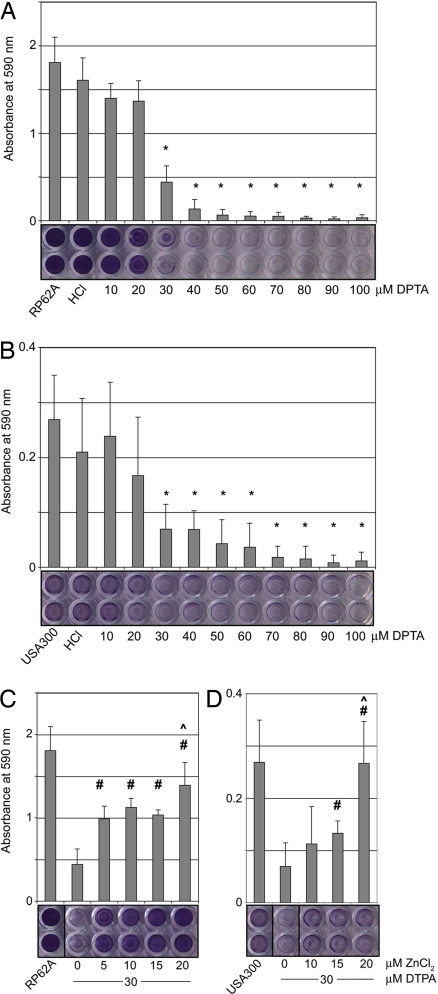Fig. 3.
Zn2+ chelation inhibits biofilm formation by S. epidermidis and S. aureus. (A) S. epidermidis RP62A biofilms formed on polystyrene and were visualized with crystal violet; addition of the Zn2+ chelator DTPA (≥30 μM) inhibits biofilm formation. Representative wells have been scanned (Bottom). Untreated (“RP62A”) and vehicle (“HCl”) controls are shown. Error bars show standard deviation (*, P < 0.05 relative to untreated control; n = 3). (B) Methicillin-resistant S. aureus USA300 biofilms form on fibronectin-coated plates but are inhibited by addition of DTPA (≥30 μM). (*, P < 0.05; n = 4). (C) Addition of 5–20 μM ZnCl2 at a minimal inhibitory dose of DTPA (30 μM) rescues biofilm formation by RP62A. (#, P < 0.05 relative to the 0 μM ZnCl2/30 μM DTPA control; ^, data are statistically indistinguishable from untreated control RP62A; n = 3). (D) Addition of 15–20 μM ZnCl2 at a minimal inhibitory dose of DTPA (30 μM) rescues biofilm formation by USA300. (#, P < 0.05 compared to 0 μM ZnCl2/30 μM DTPA; ^, statistically indistinguishable from untreated control; n = 4).

